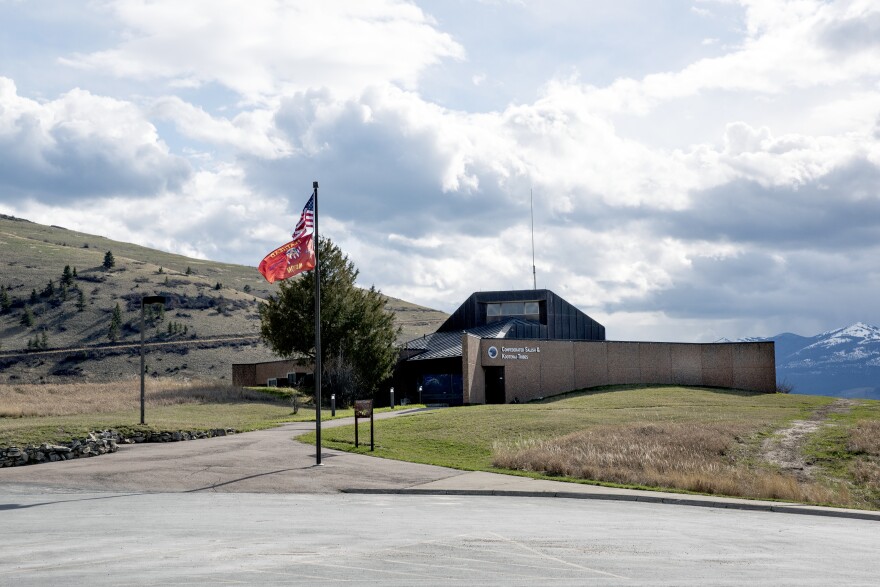Roy Bigcrane was reading a transcript of an oral historian’s speech from the late 1970s when he learned that his great grandfather Latati brought bison to the Flathead Reservation.
“It was a break in my heart that, you know, the full story wasn't out there,” Bigcrane said.
For years, the U.S. Fish and Wildlife Service’s story at the visitor center credited Latati’s step-dad, not Latati himself, for bringing the mammals to the area.
Bigcrane said Native American history is often incomplete or riddled with errors when told by others. “But we just try to do our part to correct false versions of history."
At the Bison Range in northwest Montana, a narrow gravel road takes sightseers past the visitor center along rolling hills near the Flathead River. If they’re lucky, they’ll see buffalo roaming freely on the terrain.

The Confederated Salish and Kootenai Tribes recently reclaimed management of the 18,000-acre wildlife refuge, as part of a water compact passed by Congress. The plot of land was taken by the U.S. Government without consent of the tribes.
As the tribes resume their stewardship of the land, they’re correcting inaccuracies at the bison range’s visitor center to better reflect their language and history in bison conservation.
All-new exhibits set the record straight.
A full documentary titled In The Spirit of Atatice tells the story of Bigcrane’s great grandfather and the history of the land. The tribes hope to have the visitor center open soon.
The updates come as the U.S. reckons with its past disparagement of indegenous cultures — changing offensive sports names and mascots, and renaming landmarks formerly given derogatory names against Native people.
Whisper Camel-Means is the CSKT’s division manager for the bison range.
“And when you came here previously and looked at some of the ways that things were put out, the story wasn’t quite correct,” she said.
Camel-Means said previous exhibits used the Sioux word for bison, instead of the Salish word. She said that felt like it led visitors to believe that all Native Americans tribes were the same.
“We’re not a lumped together Indian language, Indian things. We’re Se̓liš, we’re Qĺispe̓, we’re Ksanka — we all have different stories,” Camel-Means said.

Tom McDonald, CSKT’s tribal council chairman, said the tribes tried to change the information before but couldn’t. He said the U.S. Fish and Wildlife Service prioritized wildlife preservation ahead of changes inside the visitor center exhibits.
“They didn’t have people that were professionals to seek out that information, you know, to develop the true story, to do the research, " McDonald said.
Stephanie Gillin, the education program manager for CSKT’s natural resources program, said she worked with cultural committees from each tribe to get the correct history for the new exhibits.
“We listen to our elders to where some stuff we have to protect, because if we don’t, if we put it out there, we lose what it gives to us — you know, we lose that power it gives us,” she said.
In the early 1900s, the federal government broke a promise to the tribes and took land now known as the Bison Range. Oral histories now included at the Bison Range recount how tribal members were excluded from land management operations when the U.S. turned the land into a wildlife refuge.
Generational trauma, Gillin said, is still felt today within tribal communities, and correcting the information at the visitor center is about respect and preserving their history.
“We’re caretakers of — us as tribal people — are caretakers of our information. And, you know, passing that on to future generations, I think, is the key,” she said.
Roy Bigcrane is featured in the documentary that will be at the visitor center. He said it’s important that history is accurate.
“It’s just truth. Truth as best as we can tell it and know it.”
He’s happy that his great grandfather’s role in bison conservation is now acknowledged and hopes that message gets passed onto future generations.



